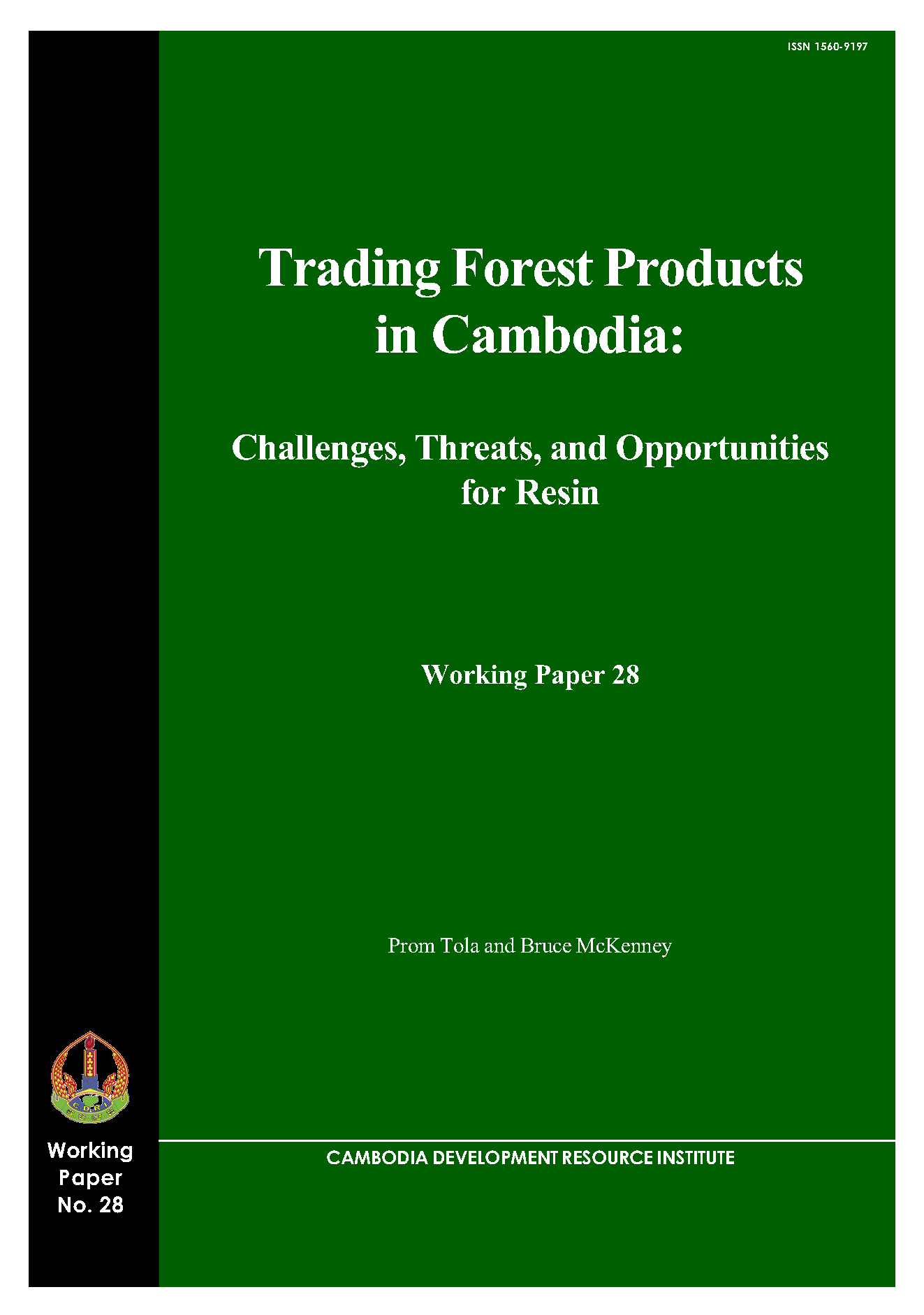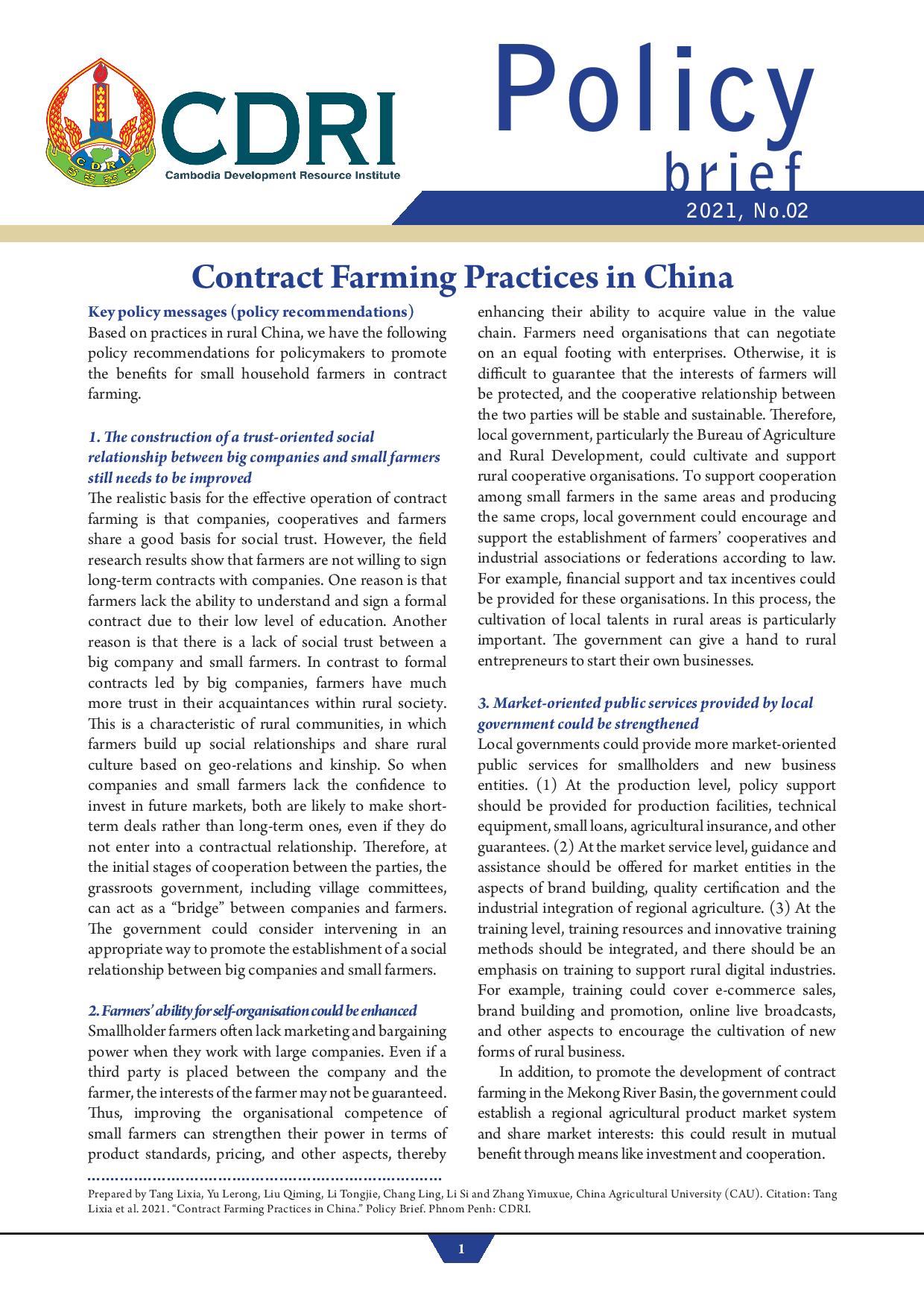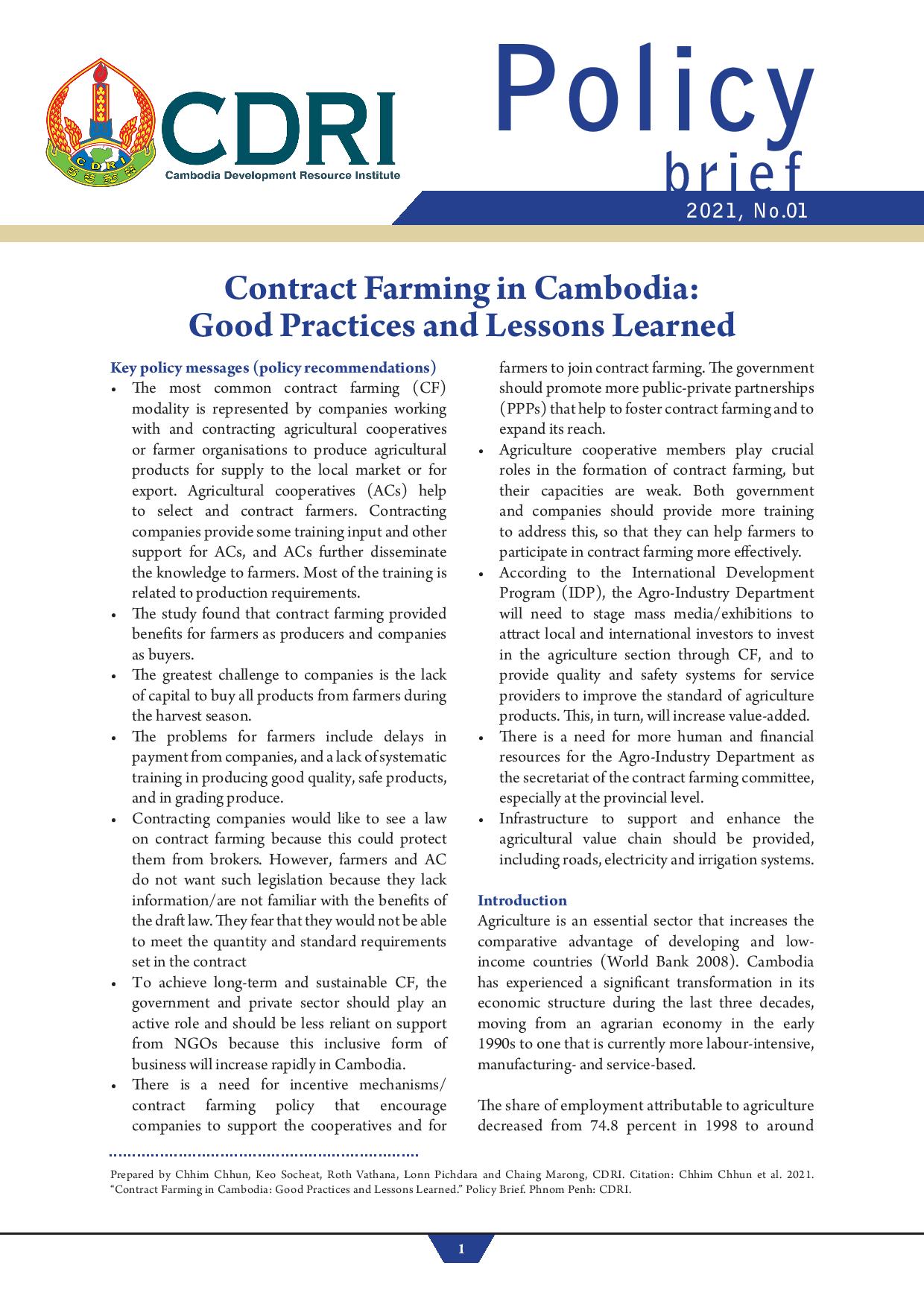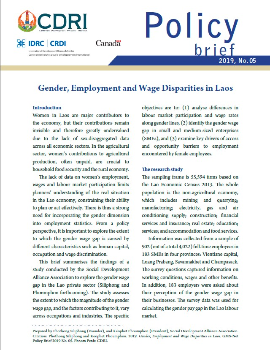
Trading Forest Products in Cambodia: Challenges, Threats, and Opportunities for Resin
Keyword: Forest livelihoods, non-timber forest products, resin trade, rural economy, market and policy analysis
Khmer PDF (9)
Abstract/Summary
Forests support rural livelihoods in Cambodia in a number of important ways. Almost all rural Cambodians use forest resources for cooking fuel and construction materials. Many also collect other products for household use and income generation through trade, such as bamboo, rattan, resin, wild fruits and vegetables, and medicinal materials. In addition to products, forests provide habitat for flora and fauna diversity, essential ecological services, and in some areas have important cultural and spiritual significance to surrounding communities.
Recent estimates indicate that about one-quarter of the Cambodian population lives in or near forest areas, and several hundred thousand rural Cambodians depend, at least in part, on income from the collection of forest products (World Food Programme 2001). These estimates, in combination with numerous case studies conducted on the role of forest resources in rural livelihoods, suggest that forest product collection and trade plays a significant role in Cambodia’s rural economy. But with the bulk of attention in the forestry sector focused on commercial timber operations, this economic activity has often been overlooked.
To explore the conditions under which forest products are traded in Cambodia, and how such conditions may affect rural livelihoods, this study focuses on one of Cambodia’s most important forest products – resin. Tapped mainly from the evergreen tree species Dipterocarpus alatus, but also from a variety of other species, resin is used domestically for sealing/waterproofing boats and exported for these uses as well as for paint and varnish manufacturing. Tapping occurs across most of Cambodia’s forest areas, in at least ten provinces, with activity most prevalent in the north and northeast regions. Improving trade conditions for resin in a manner that increases returns to producers/tappers would have a positive impact on many forest communities.
For this study, research was conducted on resin trade from four resin-producing areas – Mondulkiri, Preah Vihear, Kompong Thom, and Oddar Meanchey/Siem Reap – between August and November 2002. Information and data were collected through nearly 60 semi-structure interviews with resin traders, wholesalers, transporters, exporters, retailers/distributors, and government officials, observations on a trip with a shipment of resin, and a brief survey of community representatives from resin-producing areas in nine provinces. Key objectives included describing resin tapping methods and uses, examining the threat of logging to tapping activities, analysing the market structure for resin production and trade, describing the current regulatory framework and actual practices, assessing the key challenges to resin trade, and identifying policy recommendations.



